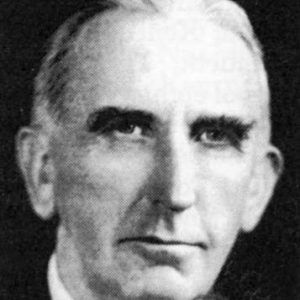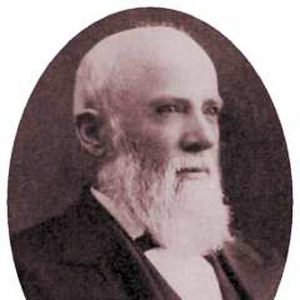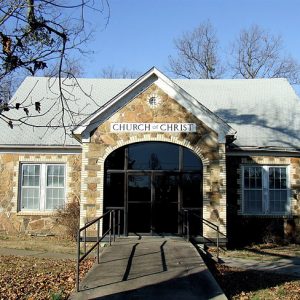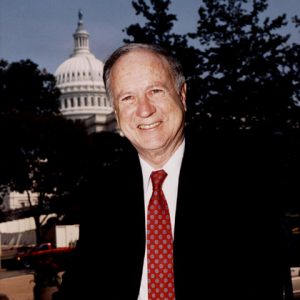calsfoundation@cals.org
Churches of Christ
The churches of Christ make up the second-largest religious fellowship in Arkansas in regular attendance numbers, behind the Southern Baptists and just ahead of the United Methodists, according to a 2000 study. Congregations of the churches of Christ are found in all of the state’s seventy-five counties. Of the three branches of the Restoration Movement, the others being the Christian Churches and the Disciples of Christ, the churches of Christ are the largest branch. This was not always so, however.
Background
The Restoration Movement, which emerged out of the nationwide Second Great Awakening which swept the frontier beginning in the 1790s, began dually on the Kentucky frontier in 1801, under the leadership of Barton W. Stone, and in 1809 in western Pennsylvania, under the leadership of Alexander and Thomas Campbell. Movement leaders sought to restore the simple worship and pure practice of New Testament Christianity. Their desire was to renounce all human creeds and innovations which divide Christians and seek unity by going to the New Testament alone.
Originally, as the Restoration Movement began, those who were Stone’s followers were called members of “Christian Churches,” while the followers of the Campbells were known as “Disciples of Christ.” The two groups paralleled each other until January 2, 1832, at Lexington, Kentucky, where representatives from each movement met and recognized each other as brethren and united their efforts to spread the message of the restoration of New Testament Christianity. From this date, in many places (but primarily in the Southern states), congregations adopted the name “church of Christ” as a sign of unity. Still, this was not a requirement, as each autonomous congregation was free to decide upon its own designation; thus, all three designations were in general use and were accepted as interchangeable.
Congregations of the churches of Christ are autonomous and recognize no earthly authority greater than the individual congregation. There are no state or national conventions, synods, or headquarters. Each congregation chooses its own plurality of elders, and the elders provide spiritual guidance, hire the ministerial staff, and are responsible for all financial affairs and public representation. Deacons, under the oversight of the elders, serve the congregation’s physical needs, maintenance, and general service. Ministers, or preachers, along with youth ministers, involvement ministers, missionaries (both domestic and international), and whatever staff the congregation approves also serve under the direction of the elders. All men who are members of the congregation are invited to participate in leading aspects of the worship services, while female members teach the young children in Bible classes, serve in staff positions, and engage in charitable and benevolent activities. Worship services may include non-instrumental singing, scripture readings, and a sermon, but every Sunday service will include the Lord’s Supper (communion). Membership in the churches of Christ is based simply upon a person’s confession of faith before witnesses that “Jesus Christ is the Son of God” and his/her immediate immersion in baptism for the remission of sins.
Churches of Christ in Arkansas
The churches of Christ as part of the Restoration Movement came to Little Rock (Pulaski County) in the summer of 1832 when Dr. Benjamin Franklin Hall, a dentist from Florence, Alabama, arrived in the city on a visit to his brother, Judge Samuel S. Hall. Little Rock had only three churches at the time: a Regular Baptist, a Cumberland Presbyterian, and a Methodist. Hall decided to worship with his brother and thirteen other members of the Regular Baptists. All but three of the small group were women, but Hall knew the men from his travels. The congregation asked Hall to preach for them, and he did so. Hall’s Restoration messages soon caused considerable excitement in the congregation and in the community. Invited to speak to the Little Rock Temperance Society on July 4, 1832, Hall spoke on “Christian Unity.” Later that same day, Hall organized Arkansas’s first Restoration church with a congregation of eight, all drawn from the other churches in the city. On the fourth Sunday in August 1832, the entire Regular Baptist congregation renounced the Philadelphia Confession of Faith and were all baptized in the Arkansas River, becoming part of the Restoration church. The new congregation now numbered twenty-two. Among the new members were Colonel Charles A. Caldwell, the speaker of the State Legislative Council, and William W. Stevenson, the Cumberland Presbyterian preacher for the last decade, who now became the new congregation’s preacher. The group took the name Christian Church.
Restoration churches soon began organizing in other Arkansas communities. Other Baptist churches converted and formed Restoration churches, such as happened in Jackson (Lawrence County) in November 1832 and then in Delight (Pike County) on April 10, 1833. The Delight congregation has continued to meet without break since then. By June 1834, there were three congregations in Crawford County and one in Piney (Johnson County).
On July 1, 1836, Stephen Strickland reported in Alexander Campbell’s Millennial Harbinger the formation of a Restoration group in West Fork (Washington County). Thirty-two members met under an elm tree to organize a congregation. About 1837, on the middle fork of the White River in Washington County, the White House Church of Christ began; it still meets today. The growth of the movement in the area attracted evangelists John T. Johnson and Robert Graham, who had preached in Little Rock before arriving in Fayetteville (Washington County) to hold a series of meetings. The meetings were so successful that Graham was asked to come to Fayetteville as the permanent preacher. Graham arrived with his family in Fayetteville just before Christmas, 1848.
Meanwhile, new Restoration congregations began at Ravenden Springs (Randolph County) and Warm Springs (Randolph County) in 1840 and at Pine Knot (Greene County) in 1841. During the 1850s, congregations organized in Batesville (Independence County), Evening Shade (Izard County), Huntington (Sebastian County), Mount Zion (Jackson County), Newark (Independence County), and Pocahontas (Randolph County). The movement was growing fast. While a few evangelists moved into the state, the movement developed many talented local preachers who were often willing to engage in open public debates with their religious neighbors. As a result, new members came most often from other religious groups rather than the un-churched.
Unlike the Baptists, Methodists, and Presbyterians, all of which split into Northern and Southern factions at the onset of the Civil War, the congregations of the Restoration Movement remained united through the war years only to divide in the postwar decades. In the period leading up to 1900, many congregations of the Disciples of Christ and Christian Churches, mainly in the North (and some major urban areas in the South), adopted liturgical innovations and a general liberal theology that the more rural, conservative, and mainly southern churches of Christ rejected as conflicting with the goals of restoration and with scripture.
The post–Civil War decades saw many Arkansas Restoration congregations divide over the aforementioned issues. A general pattern observed during the postwar decades is one of established congregations, most often in the state’s larger cities, splitting when one faction took action to introduce some innovation, with those opposed being given the choice to accept it or leave. The innovation most often leading to such open division was the introduction of an instrument of music into worship services. An excellent example of this situation is the Fayetteville Christian Church. On January 17, 1886, during the concluding Sunday service of a meeting preached by Dr. A. D. Mayo of Boston, Massachusetts, a piano was introduced into the worship service. While an opposing minority seemingly acquiesced to the introduction of the instrument, by the end of the year, the non-instrumentalists were meeting separately in the home of Mrs. George Morely. This effort evolved officially into the Second Christian Church, non-instrumental, in January 1891. The two Christian Churches maintained a relationship even though, in 1898, the Second Christian Church became the Cemetery Street Church of Christ, which eventually became the Center Street Church of Christ.
Typically, across Arkansas and the nation, it was the non-instrumentalists who were forced out. As a result, many of the dates recorded as founding dates during this period reflect the date the non-instrumentalists left their association with the Christian/Disciples congregation and formed independent congregations. While the division of the Fayetteville Christian Church came about gradually and relatively harmoniously, this was not always the case. Many of the divisions were acrimonious and produced hard feelings. This is why in most church of Christ building deeds, a clause now states that in case of any such future dispute over property, the congregation’s property belongs to the non-instrumentalists.
The post–Civil War years also saw church of Christ congregations form across the state, proliferating in the north and center of the state, with a few in some of Arkansas’s more southern counties, such as Howard and Union counties. By the turn of the twentieth century, the churches of Christ began to emerge as a separate, independent group with their own identity. On the whole, the churches of Christ are conservative in their interpretation of the scriptures and in their personal lives and are seen as primitivist in their simple worship practices.
During the 1920s and 1930s, while the number of congregations increased, the individual memberships generally were small, with usually fewer than forty or fifty. Regardless, the churches of Christ grew steadily until the post–World War II years, when they experienced significant growth as soldiers returned home from the war. With their leadership, many congregations began supporting more missionary efforts; large, local campaigns with noted preachers; extensive advertising in print and radio; and national evangelistic programs such as Herald of Truth on the new medium of television. This effort resulted in more than one million members by the 1970s, thereby surpassing the other two Restoration groups. By the end of the 1960s, the number of members in urban congregations had increased, but the real strength of the churches of Christ remained in small congregations (twenty to sixty members) in rural counties across the South and Midwest.
Christian Education
The Restoration Movement has deep roots in Christian education. The necessity for the individual to be able to read and comprehend the Bible for him/herself was one of its foundation stones. One of Alexander Campbell’s first goals was to found a Christian academy and a college. He established Bethany College in 1840, in Bethany, Virginia, and began to produce numbers of educated and evangelically minded graduates. Robert Graham was such a graduate. After settling in Fayetteville, and while busy creating new congregations in Washington and Madison counties, Graham planned to open a Christian college. In the fall of 1850, he began an academy with twenty students and the next year opened Arkansas College in Fayetteville. On December 14, 1852, the Arkansas legislature granted Arkansas College the state’s first charter to a degree-granting institution. The college was successful and soon had an enrollment of 200. In 1859, Graham left Fayetteville to accept a teaching position in Kentucky. William Baxter became the college’s second and last president; the school year of 1860–61 saw the demise of the school as its students left to fight on both sides of the Civil War. Even though Graham returned to Fayetteville in 1860 to work as an evangelist, his vocal opposition to slavery forced him to flee the city after Arkansas joined the Confederacy.
While Arkansas College was short lived, its influence lingered. In 1871, under the provisions of the Morrill Land Grant Act, the federal government offered land to Arkansas for an agricultural and mechanical college, and the citizens of Fayetteville made a bid for the new school. The memory and influence of Arkansas College played a large part in its citizens’ desire to have a college in their community.
In 1919, Adlai Stephenson (A. S.) Croom of the churches of Christ founded Arkansas Christian College in Morrilton (Conway County). Croom served as the first president of the small college. In 1924, Arkansas Christian College merged with another small college, Harper College in Harper, Kansas, changing its name to Harding College—named after James A. Harding, a pioneer preacher and educator in Kentucky and Tennessee—with James N. Armstrong as president and Croom as vice president. Ten years later, the college bought the defunct Galloway Methodist Women’s College and moved to Searcy (White County). Now known as Harding University, it is the largest private university in Arkansas with an enrollment of over 7,000 as of 2011 and permanent campuses in Florence, Italy; Athens, Greece; Brisbane, Australia; Chile; and Zambia.
Emmett Smith began Crowley’s Ridge College, a junior college in Paragould (Greene County), in 1964. Church of Christ members maintain several summer camps, a retirement community (Harding Place in Searcy), and children’s homes in Searcy and Paragould. They also sponsor and support four elementary and high schools: Harding Academy in Searcy, West Memphis Christian School in West Memphis (Crittenden County), Central Arkansas Christian in North Little Rock (Pulaski County), and Crowley’s Ridge Academy in Paragould.
Demographics
According to a 2006 study, there were 794 congregations of churches of Christ in Arkansas, maintaining a visible presence even though their 86,362 members and adherents made up only about 2.3 percent of the state’s 2006 population. In 2011, the publication 21st Century Christian reported 714 congregations in Arkansas, with 65,991 members and 83,565 adherents. This drop in numbers is evidence of some membership decline, but it also points to a trend seen throughout the state, which is small, rural churches closing as more people move to urban communities and congregations. There is also a tendency for smaller churches to consolidate and larger congregations to reach “mega” status, with outreach and missions drawing a diverse population and focusing on attracting specific groups such as youth, seniors, and singles.
Church of Christ membership is particularly strong in White County, where the tenth-largest church of Christ congregation in the nation is the College Church with a membership greater than 1,500. Another particular area of strength in central Arkansas is Pulaski County, which has thirty-seven congregations, eighteen congregations in Little Rock alone, and a county membership of 6,949. Northwest and northeast Arkansas both lay claim to large numbers of members. However, the churches of Christ are not prominent in southern Arkansas, with only Howard County recording over 1,000 members (1,136) in fifteen congregations in the southwest. Union County is the only county with over 800 members in the south central part of the state, with the rest, including the southeast counties, recording 200 members or fewer. (These numbers are from the 2006 study.)
Notable Church of Christ Members
Members of Arkansas’s churches of Christ have contributed significantly to state and national history and culture. In government, there is Ray Thornton, who served the state as attorney general and then as the Democratic congressman from the Fourth Congressional District, among other positions. Denise Miller founded the state’s first chapter of Mothers Against Drunk Driving (MADD) in 1983 in White County and has served as a state officer. Lloyd Otis Sanderson from Jonesboro (Craighead County) was a nationally recognized composer of hymn music who provided the music for such hymns as “Crossing the Bar,” “Buried with Christ,” and “Be with Me Lord,” among others. Dr. James. D. Bales, professor of theology at Harding University, published more than 100 books on varied subjects including church worship, Christian theology, comparative theology, communism, the Cold War, the free enterprise system, evolution, and textual commentary. Dr. George Benson, president of Harding College from 1936 to 1965, founded the National Education Program (NEP) in 1941, which commissioned several short movies about the threat of communism; these movies, made in Hollywood with Ronald Reagan as narrator, were shown across the county, and in 1949, General Dwight Eisenhower presented Benson and his program the first George Washington Medal from the Freedom Foundation Valley Forge. Dr. Don England, professor emeritus at Harding University and scholar in the field of biochemistry, authored three books on faith and science: A Christian View of Origins (1972), A Scientist Examines Faith and Evidence (1983), and God, Are You Really There? (1990).
Humanitarian Activities
Church of Christ congregations in Arkansas have been involved in national and international humanitarian activities. The Sixth and Izard congregation in Little Rock worked with the Airline Drive congregation in Bossier City, Louisiana, to raise $1,750,000 for relief for the people in communist Poland in the late 1970s and early 1980s. As a result of this outpouring of aid, in 1982, the Polish government gave the churches of Christ official state recognition. Judsonia Church of Christ members have been deeply involved in providing trailer containers full of children’s clothing and medical and home supplies to needy people in the Ukraine. Many churches of Christ in the state helped gather and organize aid in crises ranging from 9/11 to Hurricane Katrina.
For additional information:
Disciples of Christ Historical Society. https://www.discipleshistory.org/ (accessed May 15, 2023).
Haynie, Paul D. “A History of the Churches of Christ in Mississippi County.” Delta Historical Review 3 (Fall 1991): 19–27.
———. “A Peculiar People: A History of the Churches of Christ in Washington and Madison Counties, Arkansas.” PhD dissertation, University of Arkansas, 1988.
Jones, Dale E., et al. Religious Congregations and Membership in the United States 2000. Nashville, TN: Glenmary Research Center, 2002.
Key, Barclay. “Civil Rights Inactivism: Richard Nathaniel Hogan and the ‘Enemies of Righteousness.” In Race and Ethnicity in Arkansas: New Perspectives, edited by John A. Kirk. Fayetteville: University of Arkansas Press, 2014.
Lockwood, Frank E. “Supply & Demand: Minister Shortfall Affecting Churches of Christ.” Arkansas Democrat-Gazette, September 30, 2023, pp. 4B, 5B. Online at https://www.arkansasonline.com/news/2023/sep/30/churches-of-christ-grappling-with-preacher/ (accessed October 2, 2023).
McAllister, Lester. Arkansas Disciples. N.p.: 1984.
Morgan, Boyd. Arkansas Angels. Paragould, AR: College Bookstore Press, 1967.
Royster, Carl. Churches of Christ in the United States. Nashville, TN: 21st Century Christian, 2009.
Stephens, John C. Before Any Were Willing: The Story of George S. Benson. Searcy, AR: Harding University, 1991.
Wilson, Michael L. Arkansas Christians: A History of the Restoration Movement in Randolph County, Arkansas, 1800–1995. Wynne, AR: 1997.
———. A History of the Church of Christ in Little Rock, Arkansas, 1900–1925. Pub. by the author, 1980.
Yeakely, Flavil R., Jr. “A Context for Understanding Reports of Church Growth and Decline.” Searcy, AR: Harding Center for Church Growth Studies, 2006.
———. “Growth and Decline among the Churches of Christ in the United States, 1980–2006.” Searcy, AR: Harding Center for Church Growth Studies, 2006.
Paul D. Haynie
Harding University
 John Armstrong
John Armstrong  Robert Graham
Robert Graham  Guy Church of Christ
Guy Church of Christ  Ray Thornton Jr.
Ray Thornton Jr. 



I have evidence that there was a congregation of the Church of Christ in Randolph County called Three Rivers, which began meeting in 1806. This would be the first Church of Christ west of the Mississippi River.
The Pioneer Church of Christ was started in 1884 or 1885 in Grant County and then moved to White Oak Township, Staves, Arkansas, about three miles south, in about 1910. The church became inactive in 1975, but the building has recently been restored and has reverted back to the Bell family. It is used once a year with a Church of Christ church service including communion at the annual Bell Family Reunion.
I looked at the reference from Arkansas Angels and believe the group mentioned would have carried the name “Christian Church” if they had been influenced by Barton Stone’s 1804 movement. That they would come in 1806 is amazing but not impossible. However, it is a matter of how one defines churches of Christ. I do not dispute the existence of a Restoration group at Three Rivers as early as 1806; however, as I read the report, they called themselves “Christians”; this probably referred to the Christian Church, as that was the first common usage. That this group may have later changed its name is very possible, as local lore seems to indicate. Many Christian Churches later changed their name to Church of Christ after the Civil War and by the time of the split.
The first Restoration church in Little Rock came in 1836, called the Christian Church. So one could move the time back to 1806 as long as it was understood that this was most likely a “Christian Church.” The first congregation which met under the name of “church of Christ” was the one at White House in Washington County in 1837. This is confusing to many unfamiliar with the Restoration Movement, which began with two branches, one led by Barton Stone and the other by Alexander Campbell. Stone’s group met under the name “Christian Church” and Campbell’s under “Disciples of Christ.” When the movements united in 1832, some kept their names, while others chose “church of Christ” as a unity name. And so, the groups existed until 1906 when the Churches of Christ pulled away from the others over issues of doctrine.
So, Three Rivers should technically be called a Christian Church, as the name Church of Christ had not come into common use until after 1832.